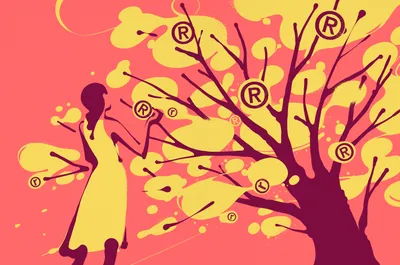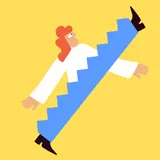
Your Brand is a Garden, tend to It
The digital revolution has been blamed for making lots of things disposable. Music. Electronics. Dating. Personal interaction. And maybe branding?
Before the digital age, people designed brands for decades, not years. American auto manufacturer General Motors made headlines in January when it unveiled a completely new logo for the first time since 1964—and it was only the fifth time in 113 years GM has made any logo changes.
The new one had a heavy task to accomplish: establish the brand’s place in a future that will be electric, not based on fossil fuels. Whether or not it succeeded depends on whom you asked, but people on social media and in the press were predictably quick to declare it a failure. No wonder designing for a big, multinational company usually takes years.
That’s because designers and strategists take the long view, almost to a fault. The question that would always come up during discussions and brainstorms—and still does—is, “Will this last?” It’s a valid question because brands gain authority and gravitas the longer they stick around. But it also tends to constrain creativity by adding the weight of future history to everything.
Maybe “Will this last?” is not the right question to ask. Another valid question we might ask ourselves is, “How long should it last?”
Maybe it’s best to think of brands as gardens.

How long should brands last?
That’s because branding needs aren’t universal. Some companies need to have a 20-year plan, others a three- or five-year one, and still others need creative direction every year. Startups, for example, have to be especially nimble because direction can (and often does) shift in their early days.
Still, the landscape can transform for all types of businesses year to year, as everyone learned in 2020. That was (hopefully) a once-in-a-century event, but the zeitgeist constantly changes. Brands that try to align too much with it run the risk of obsolescence, or at least looking silly. No one wants to be trending on Twitter for the wrong reasons. Just ask GM.
The right time
If we’ve moved past the one-size-fits-all rule of 20-year branding, is there some standard we can agree on?
Short answer: not really. Focusing on units of time—whether it’s one, five, or 15 years—misses the point. It’s not about time, but relevance and meaning, and the importance of keeping those fresh. Brands have different needs — and lifespans—depending on what’s happening at this moment.
Particularly in the startup world, some brands might easily last less. It could be as little as the time needed to validate the brand and make a small twist, or change if it needs to pivot, or upgrade if it has devolved beyond the product. It’s up to the C-suite to decide these kinds of things, because to manage a brand is to know when to change it—and prepare accordingly.
Maybe it’s best to think of brands as gardens. You can’t leave a garden unattended for long. Spend too much time away, and it gets overgrown and weedy, which requires much more work to get it back into shape. Simple maintenance would’ve kept it looking great. Meanwhile, people have stopped coming to visit because they’ve found nicer gardens.

Focusing on units of time—whether it’s one, five, or 15 years—misses the point.
Good brand keeping
Keeping them at yours requires some effort. Your brand has to engage its audience. It has to resonate with the state of the company and be part of the zeitgeist. Performance marketing may attract customers for the short and mid-term, but they won’t stay if the brand fails to actively stand for something that matters. Different forces must work together: Brand needs to have a growth mindset, and growth is only effective if it’s on-brand.
The digital revolution didn’t make branding disposable so much as reveal the nuance that was always there. The 20-year rule never fit some brands, and the digital era has made that obvious. Keep those gardening shears handy.
Illustrations © Adrià Voltà


